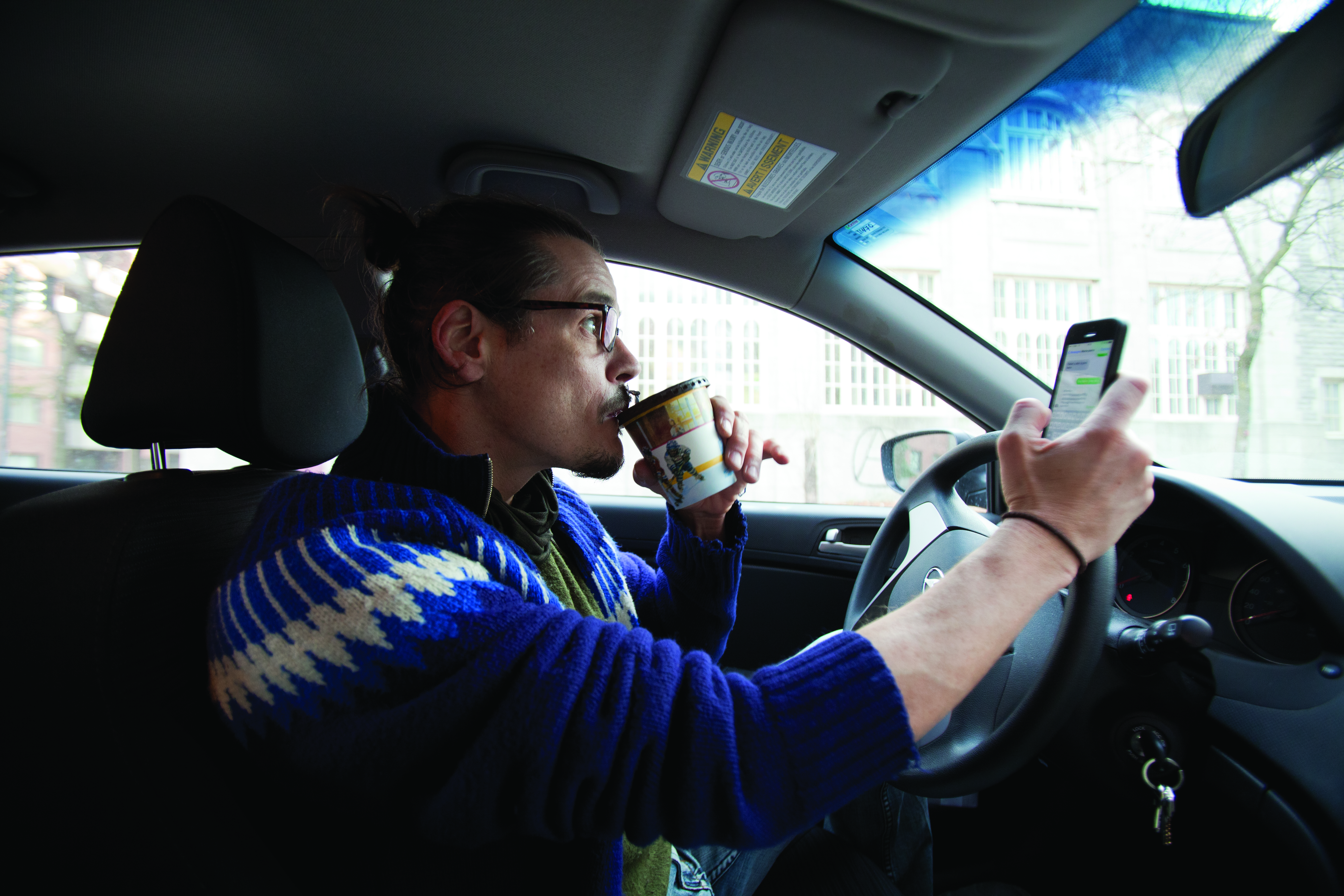With many distracted drivers in the province, Wi-Fi stop zones have been installed along highways
With the goal of enhancing road safety and decreasing accidents caused by distracted driving, Quebec has recently revamped seven “Halt” zones along highways in the province.

Free Wi-Fi has been installed at these rest areas, encouraging drivers to park and check their phones or respond to a text—which is both dangerous and illegal while driving in Quebec. A green road sign with a Wi-Fi symbol and “texto” indication directs drivers to the parking areas.
The seven Halt zones are located along both directions on Highway 55 in Melbourne, Highway 10 in Magog, the 15 in Saint-Jérôme, the 20 East in Lévis and several spots in both directions along Highway 40.
Three more zones are planned to be equipped with Wi-Fi near Lavaltrie, Rivière-Beaudette and Saint-Michel-de-Bellechasse. According to Bryan St-Louis, a spokesperson for Transport Quebec, everything will cost $122,000 for the first year, and $2,400 annually starting in the second year for maintenance.
While the road signs target drivers who use their mobile phones at the wheel, the Halt zones can be used for other activities that may otherwise distract drivers if done while manoeuvring a vehicle. St-Louis said the areas also have picnic tables and washroom facilities.
The public’s reaction on forums, however, has been to criticize the Halt areas, questioning their usefulness and practicality when common fast food chains and coffee shops like Tim Hortons and McDonald’s already offer free Wi-Fi, bathrooms and more.
St-Louis said that proximity to highways is a considerable advantage. “The rest areas are located on the highways. If people want to go to McDonald’s or Tim Hortons, they have to get off the highway, get into cities, find restaurants,” he said. “The access is easier for the rest areas. It’s faster and easier to stop right where you are on the highway.”
Thomas Wainwright, an instructor at Young Drivers of Canada, supports the revamping of rest areas, but is also concerned about the practicability of such sites. “It’s a great idea, you just wonder how many people are going to use it. It’s a public relations campaign. I think what would attract people is if they hit at the statistics of what happens if you don’t use the areas.”
He added that the safety aspect might be another selling point for Halt zones. “Are they well-lit? Would somebody want to go in there at eight or nine o’clock at night? I think the safety factor would be a really good initiative there,” said Wainwright.
How serious is distracted driving involving cell phones?
Two seconds of taking your eyes off the road—that’s all it takes to “significantly increase” the risk of crashes and near-crashes, according to Transport Canada. The Leave the Phone Alone campaign points out on their website that drivers who use hand-held devices are four times more likely to get into accidents serious enough to cause injury.
The CAA indicates that drivers who send text messages are 23 times more likely to be in a crash or a near-crash, while talking on a cell phone increases the probability of an incident occurring by four to five times.
Although drivers of all ages can be guilty of distracted driving at some point, a 2014 Canadian Council of Motor Transport Administrators (CCMTA) study found that both talking and typing/texting on electronic communication devices (ECD) were more frequent for drivers under 25 than for the 25 to 49 and 50 plus age groups. For all age groups, talking was more frequent than typing/texting. Women were negligibly more frequent ECD users than men.
In Quebec, simply holding a hand-held device while driving could land you an $80 to $100 fine and a penalty of four demerit points, according to the SAAQ.
Distraction central
While cell phones do cause a substantial concern, a study by the CCMTA observed that their use while driving has seen a national decrease from 2007 to 2010, so they can be seen as one element in the broader problem of driver distraction. The CAA Distracted Driving campaign ranks “outside object/person/event” as the top distraction, while cell phones actually fall in last place. Distracted driving can take a variety of forms: manipulating music controls, speaking with passengers and eating or drinking while driving.
Nonetheless, Wainwright argues that cell phones do still pose a serious distraction to drivers. “We all know that 20 to 30 per cent of all collisions are caused by driver distraction, and cell phones are a part of it.”



